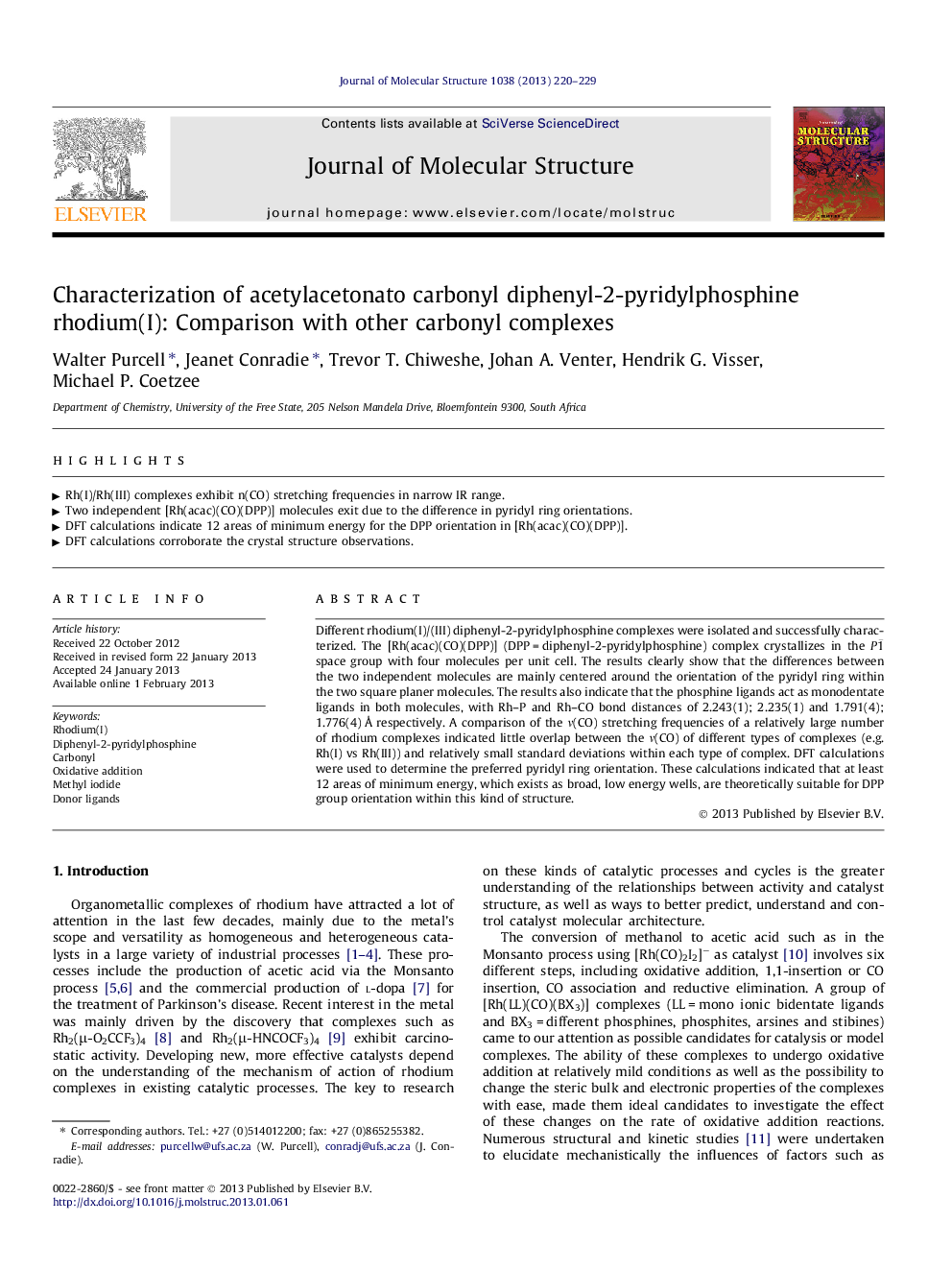| Article ID | Journal | Published Year | Pages | File Type |
|---|---|---|---|---|
| 1405362 | Journal of Molecular Structure | 2013 | 10 Pages |
Different rhodium(I)/(III) diphenyl-2-pyridylphosphine complexes were isolated and successfully characterized. The [Rh(acac)(CO)(DPP)] (DPP = diphenyl-2-pyridylphosphine) complex crystallizes in the P 1¯ space group with four molecules per unit cell. The results clearly show that the differences between the two independent molecules are mainly centered around the orientation of the pyridyl ring within the two square planer molecules. The results also indicate that the phosphine ligands act as monodentate ligands in both molecules, with Rh–P and Rh–CO bond distances of 2.243(1); 2.235(1) and 1.791(4); 1.776(4) Å respectively. A comparison of the ν(CO) stretching frequencies of a relatively large number of rhodium complexes indicated little overlap between the ν(CO) of different types of complexes (e.g. Rh(I) vs Rh(III)) and relatively small standard deviations within each type of complex. DFT calculations were used to determine the preferred pyridyl ring orientation. These calculations indicated that at least 12 areas of minimum energy, which exists as broad, low energy wells, are theoretically suitable for DPP group orientation within this kind of structure.
► Rh(I)/Rh(III) complexes exhibit n(CO) stretching frequencies in narrow IR range. ► Two independent [Rh(acac)(CO)(DPP)] molecules exit due to the difference in pyridyl ring orientations. ► DFT calculations indicate 12 areas of minimum energy for the DPP orientation in [Rh(acac)(CO)(DPP)]. ► DFT calculations corroborate the crystal structure observations.
